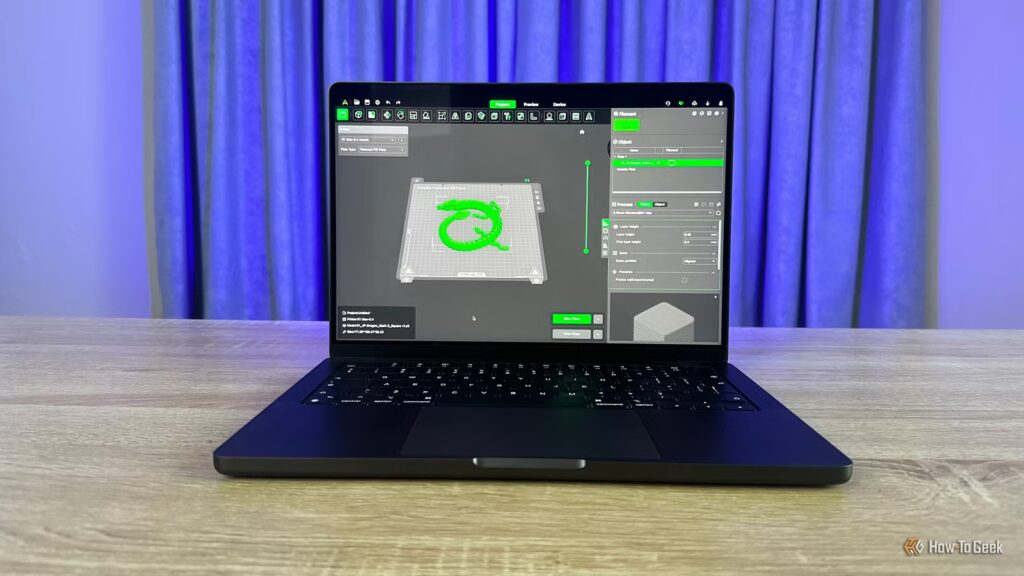There are lots of gadgets that have the word “Pro” tacked onto the end of their name, especially phones and tablets, which is fine, I guess. However, when it comes to laptops “professional” used to mean something, and modern “pro” laptops don’t live up to the spirit of that meaning.
If you understand the modern meaning of “pro” to just mean “premium”, then you’re probably OK with this, but if you buy a pro laptop with the idea its meant for serious work, well maybe you’re bound to buy the wrong tool for the job.
The word “pro” doesn’t mean what it used to
A professional laptop, in its original sense, is a machine that’s designed for a specific job. These days the language used in marketing is “workstation laptop” and what does that give you? Well, I just so happen to own a workstation laptop in the form of my Titan Computers USA machine.
Full disclosure: Titan Computers USA is a client of mine and I received my workstation laptop as a gift from the company as a sign of appreciation. This isn’t sponsored in any way or an endorsement, this just happens to be my primary daily-driver Windows machine.
So what makes this a workstation for serious work and not casual computer use or gaming? Well, it has a 24-core Intel i9 13900HX CPU, but of course that’s a CPU you can find in high-end gaming laptops. Likewise, it doesn’t have a workstation-specific GPU either, being equipped with a mobile NVIDIA RTX 4060, which is perfectly appropriate for CAD or day-to-day 3D work, rather than final full-quality rendering.
It’s when you look at the philosophy and design of this machine compared to mainstream consumer laptops that the differences start to show. It’s large and heavy, with plenty of venting and thick copper coolers. Which means that it can run full sustained loads at maximum performance without throttling. It can do this day-in and day-out. There are far more ports than you’d find on a typical consumer laptop, and a massive 300W power supply ensuring that all the components can draw as much as they need with stability.
A laptop like this also concentrates on less-sexy specifications like PCIe bandwidth, higher-quality motherboard components, and other fundamentals meant to make a machine last under heavy use.
Hardware parity has eroded the gap
Credit: Justin Duino / How-To Geek
You may have noticed, however, that my workstation laptop doesn’t have special workstation core components. No Intel Xeon CPU, or workstation-specific GPU. That’s one of the reasons the line between true professional laptops and consumer laptops with “pro” in the name has become blurred.
Broadly speaking, there’s no performance difference between workstation-specific components and regular consumer processors these days, but that doesn’t mean they’re the same. The key benefits are expanded peripheral capabilities (e.g. many more PCIe lanes), the use of error-correcting memory, and much higher levels of aftermarket support, with drivers validated against specific professional software packages.
A true professional laptop doesn’t need these features if the job in question doesn’t need them, and it’s also why some flagship consumer components like the RTX 4090 and 5090 GPUs have become beloved as “cheap” workstation cards.
Still, stick the same CPU and GPU in my workstation laptop into another laptop not designed for real work, and thermal and power constraints will knock that silicon down several pegs. It’s about holistic system design, not just key specs on a sheet.
Portability and design trump practicality
If we look at a computer like my M4 Pro MacBook Pro, you can see that the push for thinness and aesthetics have ruled out the sensible reliability and performance concessions made with my Titan. I don’t want to single out Apple here either, it just happens to be the other computer that I personally own. There are plenty of Windows “Pro” laptops that have gone down the same path. Even the venerable and well-respected ThinkPad line of laptops beloved by IT pros all over the world has fallen prey to this trend at least to some extent.
Can you really call a machine without upgradeable RAM or almost no peripheral ports “professional?” I think that’s highly debatable, personally.
Software and workflows have redefined “Pro” work
With all that said, there’s nothing actually wrong with these higher-end laptops for people who genuinely use them for professional purposes. After all, so much “pro” work these days like photo editing, CAD, video editing, and 3D rendering can be done perfectly well by these machines. Then again, the same can be said of machines without the “pro” tax.
Credit: AirShaper
This has more to do with the floor of computer performance rising across the board than the laptops themselves becoming more “pro” in any sense. Add to this that you can now run processing-heavy simulations and other traditional workstation job in the cloud, and it becomes even less of an issue since the computer itself just acts as a thin client.
What “pro” really means now
So why is this important at all? It comes down to what you want from a laptop and how it’s marketed. “Pro” is a lifestyle label. It’s an aesthetic and a price bracket. It doesn’t actually refer to any sort of professional use at all. Some of you reading this might find that observation obvious, but I’ve seen the online discourse where the label is taken literally. Especially as a way to justify high asking prices.
So don’t look at labels to figure out if the machine you’re looking at is right for the job you need it to do. After all, the pros choose whatever hardware will fit into their workflow at the best price. It doesn’t have to be pretty, and it doesn’t have to be “cool”, it has to get the job done on-time, every time.

